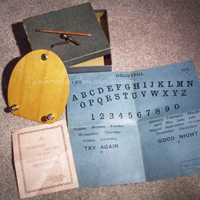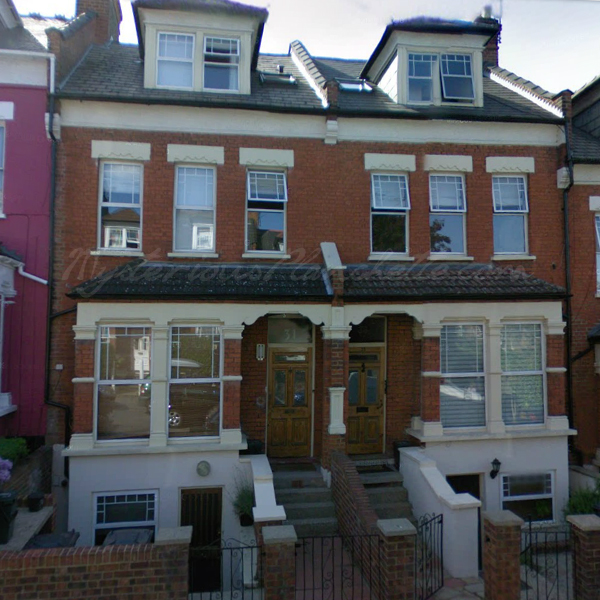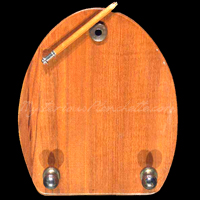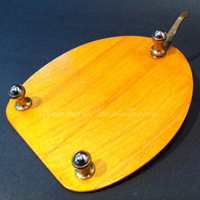We unfortunately know almost nothing of the Weyers Brothers Scientific Instrument firm. The only listing we can find from the business comes from a 1924 issue of the London Gazette, which lists the company as a general engineering firm at 50 Church Road at Southgate, London, and give the three brothers' names as Benjamin Lewin Weyers, Johannes Weyers, and Walter Weyers. Unfortunately, the given address does not match the one stamped on the paper instructions folio that accompanies the planchette in our collection, which is given as 18-19 Glebe Road, also in London. This most likely simply establishes two successive locations for the firm, or a factory versus showroom location, as was common, but we can't seem to confirm much beyond that. A modern company does go by the same name, but their common ancestry is unconfirmed.
Luckily, we do have a beautiful planchette that we know they manufactured at the Glebe Road location, which is still standing. Of all boards both British and American, the Weyers Brothers ouija-planchette combination board is among the finest and most serviceable. This is unmistakably not a toy. As befitting the brothers' trade, this is an instrument of the highest quality. A finely-varnish thin maple board makes up the plank, with even, smoothly-rounded edges. It carries the classic British shape with a round nose and flat back, though somewhat more rotund than a Jaques & Sons board. The brass castors are of the highest quality found on any board, with flared legs ending in large, nearly frictionless stainless steel ball-bearings. The castors do penetrate to the topside of the thin board, but each is secured in place with a nice brass flathead screw.
The pencil aperture is also of brass, and consists of a knurled knob on the top of the board that holds a delicate, custom-made pencil from Eagle Pencil Company, capped with silver. The most impressive feature of the board, so far not seen on any other, is that it comes with an optional "third wheel" castor that matches the rear castors. This third wheel has a brass post as well as a finely-curved brass arrow, and is designed to be used in place of the pencil, converting the planchette into a ouija board pointer, and thus giving the device its name. To facilitate this use, a 4-panel blue carboard fold-out card comes with the set, and contains the typical arched letters and numbers of normal ouija boards, but also contains days of the week, months, and a few extraneous messages such as "Doubtful" and "Try Again." The box is a plain, mottled blue-gray, without markings or labels, though the set also contains an instructions pamphlet that includes excerpts from M.A. Oxon's "The Conduct of the Circles," as first printed in the "Light" Spiritualist periodical.
It is interesting to note the overwhelming similarities between this planchette and its near-twin offered by Two Worlds Publishing around 1900. It presents something of a conundrum, because it certainly seems as if the same company manufactured the two boards, and it is unlikely that Two Worlds had the industrial capability to manufacture the devices themselves, pointing to outsourcing as the only feasible option. With our only confirmation of Weyers Brothers' existence being from the 1920s, we've yet to reconcile the relationship between these two boards, but hope some scrap of information will turn up soon.










